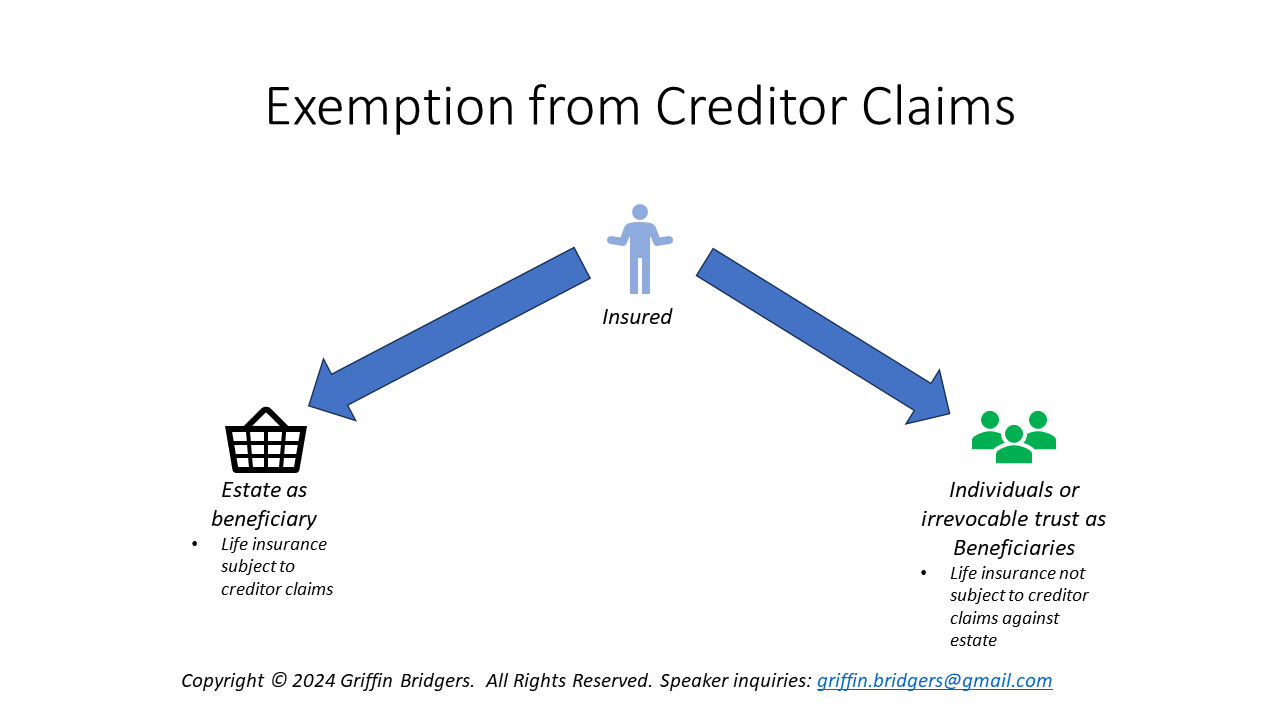Introduction to ILITs
An overview of the irrevocable life insurance trust strategy
This is a continuation of the series on everything you ever wanted to know about estate planning trusts. For an intro and index to this series, please click here. The linked article will have a series index that gets updated periodically as well, so please bookmark it.
Table of Contents:
An irrevocable life insurance trust, or ILIT, can be a valuable planning tool for clients with life insurance policies that are intended to provide liquidity or wealth replacement at the death of the insured. While it is impossible to cover all of the basics in this article, we will touch on a lot of the high points while reserving some advanced topics for later articles. In other words, if this seems dense, do not fret – a lot of the finer points I ask you to remember will later be expanded and refined.
The Problems Commonly Solved by ILITs
In short, an ILIT is an irrevocable trust that accomplishes two primary goals after the death of one or more insureds – (1) protection of the death benefit from estate tax, and/or (2) protection of the death benefit from claims of creditors of the insured(s) or beneficiaries. (Long-term management of the cash for beneficiaries may also be a goal, but that assumes the cash is not put to a different use by the estate as we will further discuss.)
Traditionally, ILITs have been promoted primarily as an estate tax savings tool – the first goal listed above. For estates that will exceed the applicable exclusion amount of a decedent, it is possible (first taking into account the estate tax marital deduction, charitable deduction, and/or disclaimers) that there could be some estate tax liability. With a current $13,610,000 basic exclusion amount per individual and $27,220,000 per married couple for 2024, this is not as frequent of a problem as it was when the exclusion was only 5 or 6 figures.
Regardless, estate taxes generally must be paid within 9 months of a decedent’s date of death. While there are some exceptions, extensions and deferrals available, most taxable estates operate off this assumption. Payment of this estate tax requires cash. So, for highly-illiquid estates, you run the risk that assets must be sold in a fire sale to generate enough cash to pay estate tax. Alternatively, illiquid assets must be leveraged to borrow the funds, possibly at a high interest rate or with recipients of these assets having to personally guarantee or collateralize the debt. One way to provide some liquidity without having to resort to a fire sale or borrowing is through the use of life insurance.
I would be remiss if I did not mention that estate tax is not the only liquidity need – thus invoking the second goal above. There could be debts and claims against the estate, or against secured assets, which should be satisfied at a decedent’s death, creating additional utility for life insurance. So, the use of life insurance and ILITs is not a conversation reserved solely for taxable estates – it is important for any estate with liquidity challenges. These tools can also be used, for example, as a wealth replacement tool where charitable contributions of (perhaps illiquid) assets will be used to offset estate, gift, or income tax liability.
Usually, life insurance is received free from income tax under IRC Section 101 with some exceptions we will later discuss. But, the same tax exclusion does not apply from an estate tax perspective. If a decedent dies holding “incidents of ownership” over a life insurance policy insuring the decedent’s life, then IRC Section 2042(2) includes the entire death benefit of the policy in the decedent’s gross estate. Further, if the insured’s (probate) estate itself is the beneficiary of the policy, the same gross estate inclusion applies to the death benefit under IRC Section 2042(1) even if no incidents of ownership are retained by the insured at the insured’s death. The outcome is that the funds intended to pay estate tax end up generating their own estate tax liability, reducing the leverage available.
Keep reading with a 7-day free trial
Subscribe to State of Estates to keep reading this post and get 7 days of free access to the full post archives.



